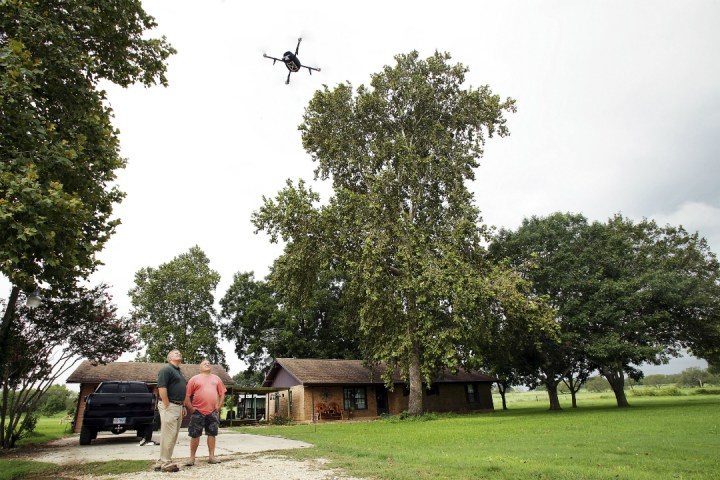
Texas is known for doing everything bigger, and hailstones are exceptionally large in the Lone Star State. Hailstorms in Texas drop everything from your everyday small hailstone to huge softball-sized chunks of ice that wreak havoc on homes, cars, and unwary pedestrians. San Antonio was the recent recipient of a stream of intense hailstorms that spanned a three-month period.
Homeowners had roof damage that included holes in their roof big enough to see through, according to Fortune. Roof repair companies in the area struggled to keep up, and insurance agencies scrambled to provide estimates on the damage. Allstate insurance decided that drones could be quicker and more efficient in assessing roof damage than adjusters climbing up on ladders.
As a test case, Allstate used drones to inspect roofs that were already inspected the old fashioned way and compared results. Aerial photographs were converted to 3D visualizations that helped the company assess the damage. Allstate indicated that plans are underway to operationalize drone usage in the next couple of months.
In this instance, Allstate used quadcopters smaller than 55 pounds to avoid requirements for a drone spotter. In the future, the company plans to test fixed wing drones that are must faster than their rotary powered counterparts. Fixed wing drones would allow Allstate to assess a larger area in one pass, giving real time damage estimates for multiple homes in the case of natural disasters.
Unfortunately, fixed wing drones are limited in use by the FAA, and require them to be in the operators’ line of sight or acquire special clearance. For now, quadcopters seem the company’s best option. Allstate hopes that drones can speed up their claims process, saving time for customers and money for the company.


